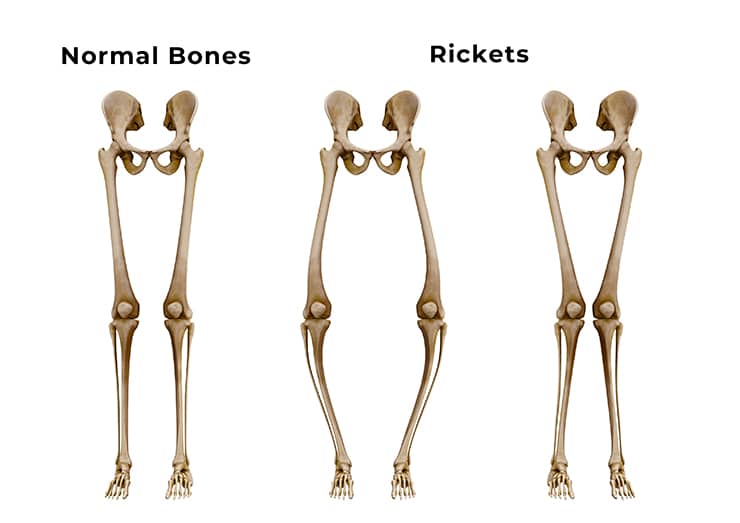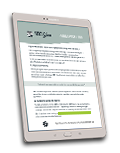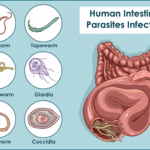The Consequences of “NO Sun Exposure is Safe”

In the early 20th century, rickets, a bone formation disorder that’s cause by vitamin D deficiency, brutalized children in the United States and the UK. At the time, this was mainly driven by malnutrition. Unfortunately, rickets is not a disease of the past.
The rise in rickets, a condition characterized by weak or soft bones, has been a concerning consequence of the fear-driven message propagated by some organizations. In the early 21st century, the American Association of Dermatology (AAD) messaging changed to NO amount of sun exposure is safe. Since rickets is primarily caused by a deficiency of vitamin D, which is synthesized in our skin when exposed to sunlight, rickets cases started to increase.
Around this time, the world was hearing about the hole in the ozone in southern hemisphere (articles were usually focused on Australia). And then we have the issue with technology and helicopter parenting. Gone are the days of being outside all day, only to come back home for dinner. Technology, video games, and parents worried about their children’s safety, have changed the way that kids are raised, with a complete reversal of time spent outdoors to time spent indoors.
In the United States, parents have obliged by covering their children head to toe in sunscreen anytime there were going to step out of the house.
The AAD’s emphasis on avoiding sun exposure and promoting the use of sunscreen has inadvertently contributed to a decline in vitamin D levels and an increase in rickets cases. Most people are taking the ‘sun safe’ message too far.
While it is important to protect our skin from excessive sunburn and harmful UV radiation, completely avoiding the sun can have detrimental consequences on our health, specifically in terms of vitamin D deficiency. This is especially true in the developing child, who needs adequate vitamin D levels to help form their bones.
It is important to recognize that sun exposure, in moderation, is essential for maintaining adequate vitamin D levels. Sensible sun exposure, especially during the times of the day when UV radiation is less intense, can help our bodies synthesize vitamin D naturally. By striking a balance between sun protection and responsible sun exposure, we can mitigate the risk of conditions like rickets while still enjoying the health benefits of sunlight.
The rise in rickets cases serves as a reminder that a one-size-fits-all approach to sun exposure may not be appropriate or beneficial for everyone. It is crucial to consider individual factors such as skin type, geographical location, and the intensity of sunlight when determining the appropriate amount of sun exposure.
In 2008, in an effort to prevent vitamin D deficiency and rickets in children in the United States, the American Academy of Pediatrics (AAP) increased the recommended daily intake of vitamin D for infants from 200 to 400 IU (1).
In Pediatrics, investigators Simon and Ahrens report that since 2009, the percentage of US infants who meet the AAP’s guidelines for vitamin D intake has not increased (2).
Investigators reported that higher breastfeeding rates and the lack of sunlight in the winter months due to Canada’s higher latitude may have created a greater impetus for vitamin D supplementation along with a heightened awareness among both parents and clinicians.
This is because mothers are vitamin D deficient and they are not providing adequate vitamin D through their breast milk. The answer isn’t stopping breastfeeding early, nor is it baby formula. The answer is to make sure that women have adequate vitamin D levels prior to conception and, if needed, that babies and mothers are supplemented with vitamin D.
We should aim for a holistic approach that promotes sun safety while recognizing the importance of maintaining optimal vitamin D levels for children and adults alike. Education, open dialogue, and a balanced perspective on sun exposure can help us strike the right balance and ensure that we all get the adequate level of vitamin d that we need without compromising our well-being.
- Wagner CL, Greer FR; American Academy of Pediatrics Section on Breastfeeding; American Academy of Pediatrics Committee on Nutrition. Prevention of rickets and vitamin D deficiency in infants, children, and adolescents. Pediatrics. 2008 Nov;122(5):1142-52.
- Jaspreet Loyal, Annette Cameron; Vitamin D in Children: Can We Do Better?. Pediatrics June 2020; 145 (6): e20200504. 10.1542/peds.2020-0504
Enjoying this content? Sign up for updates... It's FREE!

















